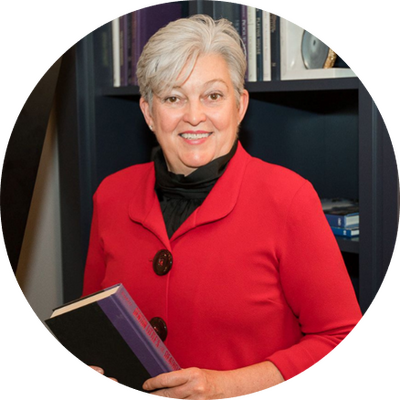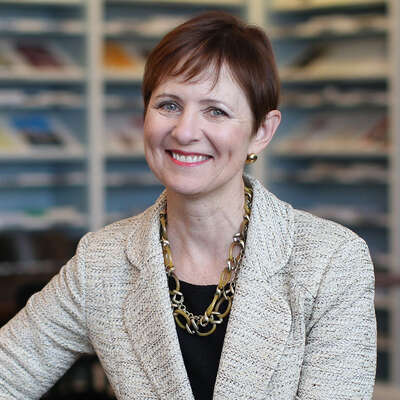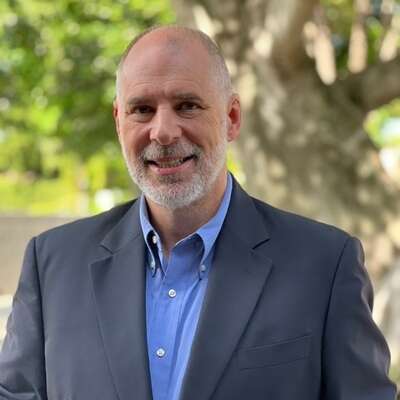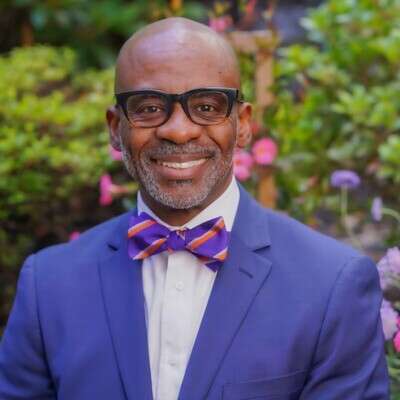
Building Tomorrow is a curated series offering exclusive one-on-one discussions with prominent executives across the real estate spectrum. Through a refined lens, each installment unpacks trends, challenges and exemplary leadership strategies steering the trajectory of specific segments within the real estate landscape, offering a concise yet comprehensive understanding of market dynamics.
This interview features Stephanie Duncan, Board Director, ULI and CREW Washington, and former Chief Operating Officer, Stonebridge. Part I examines the evolution of commercial real estate, its implications on the post-pandemic economy, and the emergence of the new urban model. Part II delves into the ongoing debate of work in progress – remote, hybrid, or in-person, the pursuit of sustainability and profitability with a balanced approach, and the essential role of leadership in the real estate industry.
Work In Progress – Remote, Hybrid or In-Person
Boyden - Do you have any advice for cities where office markets continue to struggle after covid?
Duncan - I wish I had that answer! The 2024 Emerging Trends in Real Estate published by ULI and PwC at the ULI fall meeting reported that after 3 years of holding out hope, industry leaders have finally concluded most of us really won’t be returning to the office nearly as often, and some not at all. This not only has a significant impact on office owners, managers and investors – it also affects our downtowns and any business dependent on the presence of office workers. Research on phone mobility data by Georgetown University and the University of Chicago shows visits made to the largest U.S. cities (those over 1.5 million people) are down more than 40% from pre-pandemic levels.
Boyden – What is the role of office space as the economy evolves?
Duncan - Personally, I still believe in the value of having employees in the office together – not just because of my career in office investment and development, but because I have witnessed the power of proximity for collaboration and learning. While technology enables remote communication and collaboration, many of our knowledge-based jobs depend on innovation and creative thought provided in group settings. Many of the roles within CRE – architecture, engineering, brokerage, development – even accounting and law – have an “apprenticeship” culture where junior team members learn from senior professionals. The value of the informal conversations that occur after a meeting as you walk back to your office from the conference room cannot be ignored. I am concerned our younger workers are missing critical career development by working remotely.
Boyden - You’ve pointed out the volume of CRE mortgages coming due in the next few years, and the value gap between high-quality and low-quality properties. Much of that is for office buildings. How will you expect the next few years in distress to differ from the last recession when the market crashed in 2008-2009?
Duncan – Let’s first consider that lenders don’t want to own property, nor do they want to write down assets on their books. I expect more leniency this time around, particularly for higher-quality, well-located assets that may just be struggling a bit with vacancy and re-tenanting. However, there are clearly some assets where that’s not going to be possible, particularly in class B and C assets, and in office. There’s just not going to be an option and we will see some distress.

Boyden – Do you see an increasing share of lending from non-bank lenders?
Duncan – There’s a struggle between owners resisting high interest rates and private lenders seeking opportunity. In twelve months, we’ll see more private lending if traditional banks don’t loosen credit. If rates ease, however, that could change.
Boyden – For loans that are not in high growth or stable areas, do you see distressed real estate having a significant impact on local economies?
Duncan – Office is a real issue, even where there’s strong demand for multifamily. The second and third tier markets that ULI calls the niche markets – the backbone – have enough outside industry to maintain employment and therefore demand for multifamily real estate, particularly with the scarcity of new home construction. Office is where we are going to see the problem. Some people point out how new technology, such as AI, will create new jobs in the office sector. Will it grow fast enough? I’m not sure. Salesforce recently announced it will rehire 3,300 employees, many who were laid off earlier in 2023, because they are seeing so much growth, partly because of their projections of how AI will affect their product with more AI and automation features. Still, there are a lot of markets where offices will struggle for quite some time.
Boyden – And we all know that most office buildings are not viable for residential conversion.
Duncan – True. People talk about that a lot, but there’s only a small portion of office buildings for which that’s viable. There are some other uses that cities need, such as providing civic services or education. A developer I worked with successfully sold a vacant office building for conversion to a charter school. However, we tried to convert another office building in Alexandria to a public school, and we weren’t able to make it work, but I do think there are other potential uses.
Sustainability and Profitability – A Balanced Approach
Boyden – How do you see sustainability related to profitability in CRE – and how should it relate?
Duncan – In most instances, sustainability measures are driven by the tenant or the institutional investor. For example, a GSA lease may require the building to be LEED-certified, or it must have certain energy efficiencies or credentialling. It wasn’t whether sustainability itself would make money – it was the only way to make money and stay in the game. Increasingly, institutional investors have sustainability and other ESG goals as a company that don’t necessarily tie to profitability. Tracking and reporting those metrics is necessary for landlords. And expenses are increasing: interest rates, property taxes and the cost of talent. If you can decrease expenses through energy savings by increasing the use of green energy, such as solar, implementing technology, such as installing occupancy sensors or smart lighting, and other tactics to decrease utility usage, will help drive overall profitability.
Boyden – How can we use technology to improve profitability?
Duncan – In public real estate companies, a lot of consolidation and reporting is done using spreadsheets because each group has its own system, and it all needs to be coordinated by the accounting group for quarterly filings. It isn’t a lack of financial resources; each group is in their own silo. Technology has changed a lot, and we can collaborate better now. But you still see the development team running their model, the investment team running their model, and somebody else is doing their thing – and none of them connect. I remember seeing a new technology to track leasing activity. Our company, the landlord, said, “We do all long-term GSA leases, with one lease per building, so lease-tracking software isn’t valuable to us.” The software company went to institutional investors and said, “We can help you consolidate.” For investors dealing with numerous operators and managers, that was gold. The investors went back to the landlords, including us, and required the use of that software to meet a different need than the original design of the technology. We’re seeing the value of being able to consolidate and report information in a way that wasn’t available until recently. As SEC and other reporting requirements grow, companies will be forced to adopt new technologies. There are many areas where we can better utilize technology and institutional owners will drive these new applications.
Boyden – What about Proptech; security systems and other non-financial technologies for real estate?

Duncan – We’re going to have to step up our due diligence. When the internet of things is running a building, we expose ourselves to cyber-security issues. We’re seeing breaches from outside vendors – if a vendor is hacked, the building owner or operator is at risk because the vendor’s systems are often connected to the owner’s systems. We need to avoid exposing ourselves to threats that didn’t exist until recently. The technologies I find most interesting are those involving energy usage and management, modelling energy usage and alternative energy sources, such as solar. There are some serious savings opportunities in the Inflation Reduction Act of 2022, but it’s not one size fits all. If you can deploy software to analyze your own portfolio, you will realize the benefits faster. That’s where I see the technology being most impactful: How can I use technology to support my decision-making using real data?
Boyden – You’ve alluded to all the reporting that’s requested – not necessarily delivered – relative to ESG, and that some of that may not be good data or all that useful. Is there a compliance issue with all the reporting?
Duncan – Yes, it’s easy to push that under the rug if you are an owner, or to push responsibility down to an operator or a vendor. But do you have insight into the reliability of their data? In public accounting financial reporting, rules and practices have been in place for so long there’s reliability. For a lot of the new [ESG] information we’re being asked to track, there aren’t many rules or accepted interpretations. If you report data, and then the data is questioned, or perhaps the standard is refined, do you need to restate the data? Does that result in a loss of investor trust in the data? There’s a lot of data out there, but is it the right data and does it measure what’s important?
Boyden – It seems there’s a conflict between the quality and the cost of the data, particularly if reporting is being pushed to a vendor or operator. No one wants to add the cost of better data.
Duncan – That’s clearly an issue, but if the technology streamlines processes and produces better data, you may be able to reduce the staffing required to get that data. You may end up in a cost-neutral or even cost-positive position – while actually improving your decision making.
Boyden – Are there any innovations, given your accounting background, that you wish you had years ago?
Duncan – When I think about the days when I was looking at a stack of checks to sign and backup for each one, it just blows my mind. Something as simple as paying invoices is completely electronic today. The vendor creates an invoice and submits it into the system, the system routes it through an approval workflow, so the person who is responsible for making this purchase actually codes the invoice and looks at the variance, the invoice information is uploaded to the general ledger, and a check register is created for electronic signature and payment. We’ve eliminated keypunch time and errors, as well as printing and mailing paper checks, and there’s complete visibility to every invoice, even if it hasn’t been paid yet. If we can provide this level of automation, accuracy and transparency with something as simple as accounts payable, think how much more we can do. I see tremendous opportunity in future technology improvements.
Leadership in the Real Estate Industry
Boyden - What types of conflict have you seen within large real estate organizations? How do you get people to work together?
Duncan - I have found the best way to get people to work together is to create opportunities to build relationships. I was a senior executive of a public REIT executing a national expansion plan. We purchased $3B of real estate assets across 14 markets in 2 years. I was guiding the transition of these acquisitions and it was challenging for our team to assimilate that many properties and employees in a short period of time, while maintaining our entrepreneurial culture. There was tension between accounting and property management. The property management teams were struggling with new software programs and the accounting team was under pressure to meet public reporting deadlines. I knew we couldn’t eliminate the stress each group was feeling – but we could reduce the friction between groups by introducing the humans behind all those emails. I led an initiative to take members of the accounting and lease administration teams to visit each market. The accounting team provided hands-on accounting software training one day and then toured the properties and shadowed the property managers for a day – with a group dinner in between for casual interaction. This provided the on-site staff with much-needed training and gave the accounting team a better appreciation for the property managers’ daily schedule and reset expectations for response times. There’s no better way to build team relationships than in-person interactions – especially when the teams bond over a game of eight-ball.

Boyden - If you were assembling a real estate platform today, what are the characteristics you would look for in the team?
Duncan - I would focus on strong analytical skills and natural curiosity. I can teach someone real estate fundamentals – but it’s much harder to teach them how to solve problems. Every real estate project is unique, so the ability to apply concepts in different situations is important. I would also focus on generational diversity. Surveys of commercial real estate companies show a disproportionate percentage of employees are over age 55 and commercial real estate companies rely on hiring experienced employees and tend to lag in recruiting and retaining Millennial and Gen Z talent. Commercial real estate has tended toward traditional job roles with less technology integration, which is less attractive to younger employees. The more technology can be utilized to streamline work and reduce redundancies, the more roles will evolve, and the more likely commercial real estate can recruit the workforce of the future.
Boyden - Issues like new technology and sustainability seem to have little to do with real estate and everything to do with general management. Throughout your career, as real estate became more institutional, how have you seen changes in the decision-making process and universal challenges like getting people to pull in the same direction?
Duncan – Change is hard. You need to get people to admit change is needed. I do my own research, canvass my network and develop my own approach. Then I go back to the team and share those best practices. When there’s pushback, I say, “I’ve surveyed the market, and these market leaders are doing it this way …”
Boyden - What are the challenges to strategic decision-making at the C-suite level?
Duncan - When I was with a public REIT, I was frustrated because our ability to make good real estate decisions could be hampered by our tax structure. We were laser-focused on the dividend in response to the market’s expectations. We needed to sell some assets in underperforming markets, but we couldn’t reinvest the proceeds in a way to support the dividend. I had a similar situation with a developer where we had a great property at the top of the market and we proposed a sale to our institutional partner, but they didn’t want to sell because they had no place to reinvest the proceeds. Unfortunately, capital decisions can still outweigh strategic decisions.
Boyden - How do we attract more talent to real estate?
Duncan - Careers in CRE have become more visible and I have witnessed the industry becoming much more diverse. Unfortunately, there has been little progress in diversity at senior levels of the industry. CREW Network’s 2020 Benchmark study, found women still hold just 9% of the C-suite positions. I continue to see women starting their own firms rather than struggling to achieve promotions in large companies. I believe companies can reduce this leakage of mid-career female talent by providing the flexibility needed to balance their caregiver responsibilities. To gain access to talent with new skill sets, CRE companies cannot rely on the traditional approach. The alternate workforce, such as contractors, freelancers, and gig workers, is expanding rapidly and could offer access to talent with advanced skills. Many people desire more flexibility than a typical full-time role offers, and they have valuable skills and experience that can be leveraged for a particular initiative or short-term need.
Boyden - Is there a role for executive recruiters?
Duncan - I have used recruiters in the past and we’ve been most successful when the recruiter has a strong network in the particular segment we need. One of the primary advantages of a recruiter is accessing candidates not already in my network. A critical question to ask a recruiter is “Who do you know that I don’t know?” I maintain relationships with several recruiters and periodically discuss the changes they’re seeing in the industry.
Boyden - Please describe your mentoring experience: who influenced you, and how have you helped others?
Duncan - Over my career, formal mentorship programs have evolved. When I started as an auditor in public accounting, you gained experience by seeking out opportunities. It was a process of self-initiated discovery – and my drive and curiosity served me well. As an Assistant Controller for a national homebuilder, I remember watching the entire series of training tapes for our construction superintendents in my “free time” in order to gain understanding of the company’s operations. Today, there are many more structured approaches to mentorship, within academic programs, private firms and professional associations. The DC Chapter of CREW Network, for example, has allowed me to mentor women one-on-one and provided a platform to teach real estate finance. There are many talented non-finance professionals in our industry: architecture, engineering, development, legal, leasing, etc. To be successful in their careers, they need to understand how we analyze the financial performance of a project so they can contribute to the success of the project. At this stage of my career, I balance individual conversations with those larger platforms, whether that’s through speaking engagements or advisory roles.
Boyden - Any advice for your younger self?
Duncan - When I was a senior executive for a large public REIT, I missed the opportunity to network across the organization with our Investments, Capital Markets, Development, IT and other departments. I encourage others to make sure they do this, so they learn more about what other parts of the company are working on and perhaps uncover an opportunity to work on a special project outside your team. It’s also important for others to learn more about your expertise and what you’re working on. Relying on your supervisor to advocate for you isn’t enough – you need advocates in other parts of the organization. If you’re in a smaller organization, professional associations also can offer the opportunity to find these advocates.
Boyden - Where would you launch a career today?
Duncan - I recently participated on a CREW panel, and we presented numerous real estate financial metrics. At the end, we worked through different scenarios: what if rent goes down, what if your interest rate goes up, etc. One woman asked what to do if your interest rate is higher than your return on capital and I said, “That’s when you become a lender!” But if you’re asking about where I would want to be a real estate owner, I would most likely invest in health care properties. I’m not talking about medical office – I’m referring to large hospital complexes and those type of properties because health care is a key economic driver in nearly every state. Even though multifamily is the darling right now, I feel we will get to a point where there is over-supply and softness in those fundamentals.
Boyden - At this point in your career, giving back seems important. What interests you now?
Duncan - Some people tell me I’m the busiest retired person they’ve ever met. I’m involved with CREW and ULI (Urban Land Institute), including some one-on-one mentorship through those organizations. I’m looking for other opportunities to share my knowledge, such as speaking and working with students in university real estate programs to develop our next generation of CRE professionals. I’m also building a portfolio career at the board level assisting private companies going through transition and growth. I’m interested in real estate-adjacent companies, such as Proptech, who need help understanding their real estate customers.
Boyden - This is great. Thank you, Stephanie!






